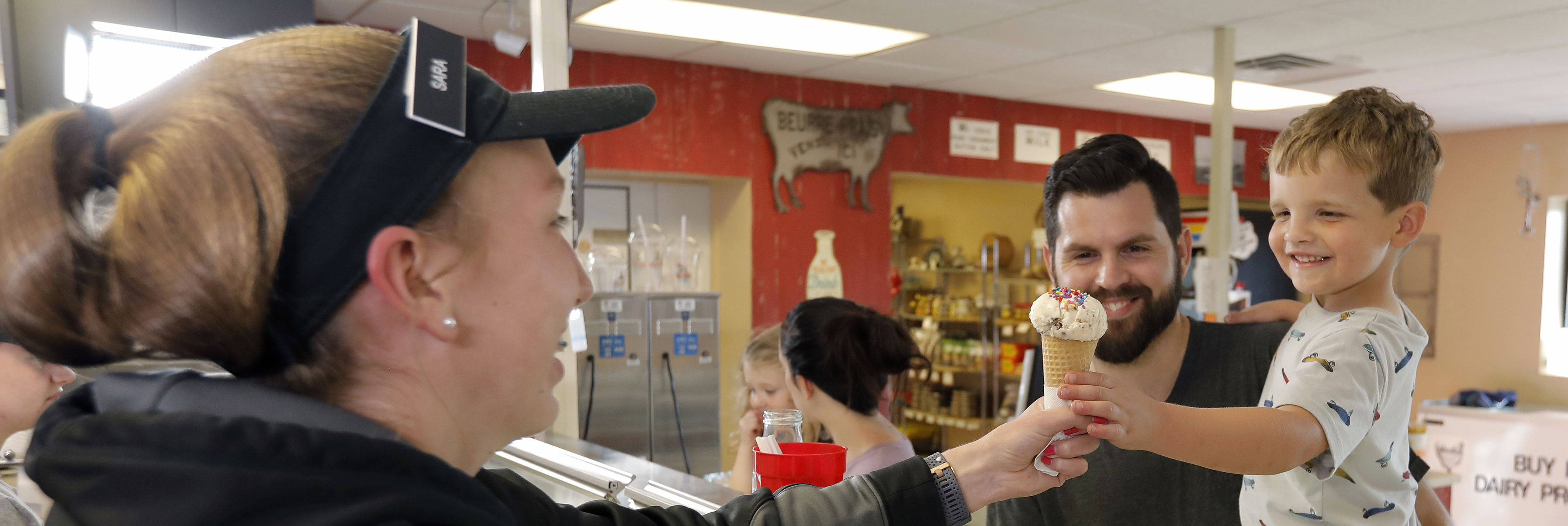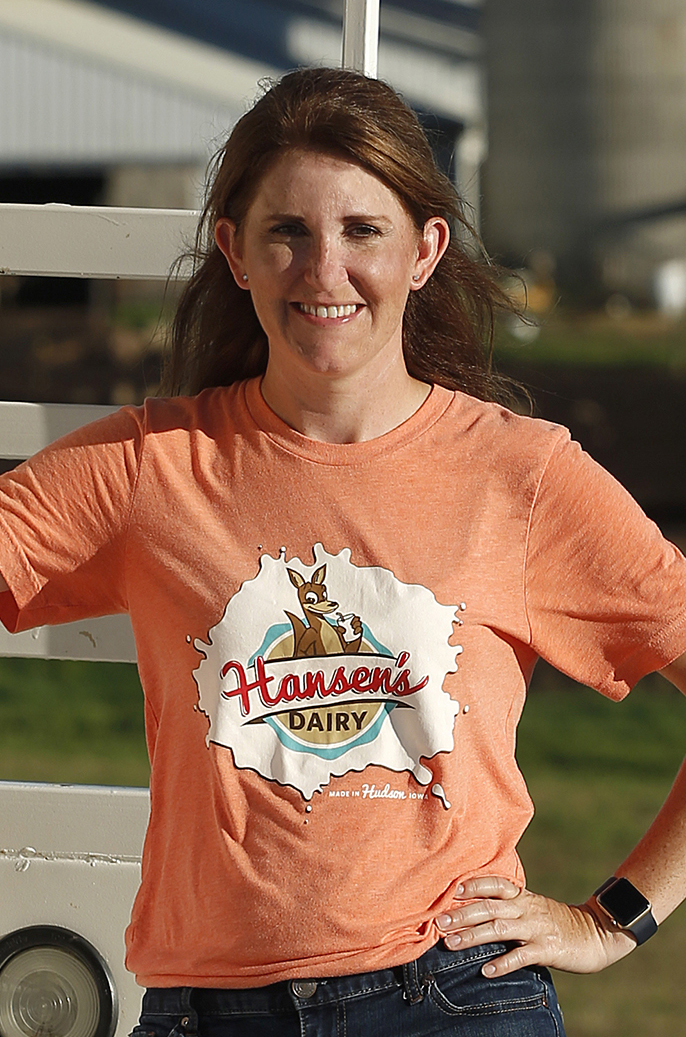Rootstalk: How would you describe Hansen’s Dairy Farm?
Hansen: This farm has been in our family for over 150 years. I married into the family. My husband and his three brothers and their mom and dad are the owners. They started because he and his brothers all wanted to come back and work on the farm. In order to have enough income for all the families, they decided to start the creamery. That got going in 2004. Each brother has his own responsibilities. The youngest brother, Blake, the one I am married to, takes care of the cow herd. We have about 300 cows on the farm, all ages, and milk about 120. The next brother is Blair, and he handles the crops to feed the cows every day. The next brother is Brad; he is the one who processes all the products in the creamery. Brent is the oldest and makes the deliveries and handles sales. I do book-keeping, marketing and tours.
Our products include milk, butter, cheese curds, heavy cream and ice cream, and we also raise Holstein and Wagyu-Holstein beef. We operate two retail stores, one in Waterloo and one in Cedar Falls, where we sell all of our dairy products, ice cream treats and local foods. We also sell our products wholesale to about 40 different vendors, including grocery stores, restaurants and retirement homes. We also give hundreds of farm tours each year to teach people how milk gets from the cow to the table.
Rootstalk: That’s very interesting, especially considering that you started the creamery only recently, at least in terms of how long the family has had the farm. What are your current perceptions of the dairy industry in Iowa?
Hansen: Iowa is not as well-known for dairy as Wisconsin is. We do have our share of dairy farms here, but there are quite a few people who had to go out of business or who had to drastically change the way they operate. We feel blessed that we did this back in the early 2000s. Looking at the state of the industry now, it would be really hard to survive after the past four or five years if the creamery had started more recently. And I would say that it is difficult in this day and age, even for what we do. Sales of fluid milk have always been our benchmark for how well the business is doing, but fluid milk sales have definitely gone down, especially the last five, six or seven years.
So, for us, we are trying to keep up with what customers want. From what I read, people are drinking less milk, but they are still consuming the same number of pounds per year. It’s just difficult keeping up with customer preferences, especially operating on a small scale because we are not able to make new products as easily as a larger company that has a bigger research and development budget and has the ability to change faster than we do at a small scale. It can be difficult to get the supplies that we need in the quantities that we need to make new products. A lot of times suppliers want gigantic orders, which would be a ton of inventory for us.
It is the same with ingredients and packaging. The funny thing is that all this is still true, but things have changed even in the past few weeks with the Coronavirus. Overall, the state of the industry is still the same, but currently you are seeing less milk on the shelf. People are coming to us because they know that we always have milk at our stores, and that is not the case for larger grocery stores. It is very interesting to see that all of a sudden people are concerned with getting their milk. Even though milk is running out at the moment, I doubt that is going to change the prices for the better.
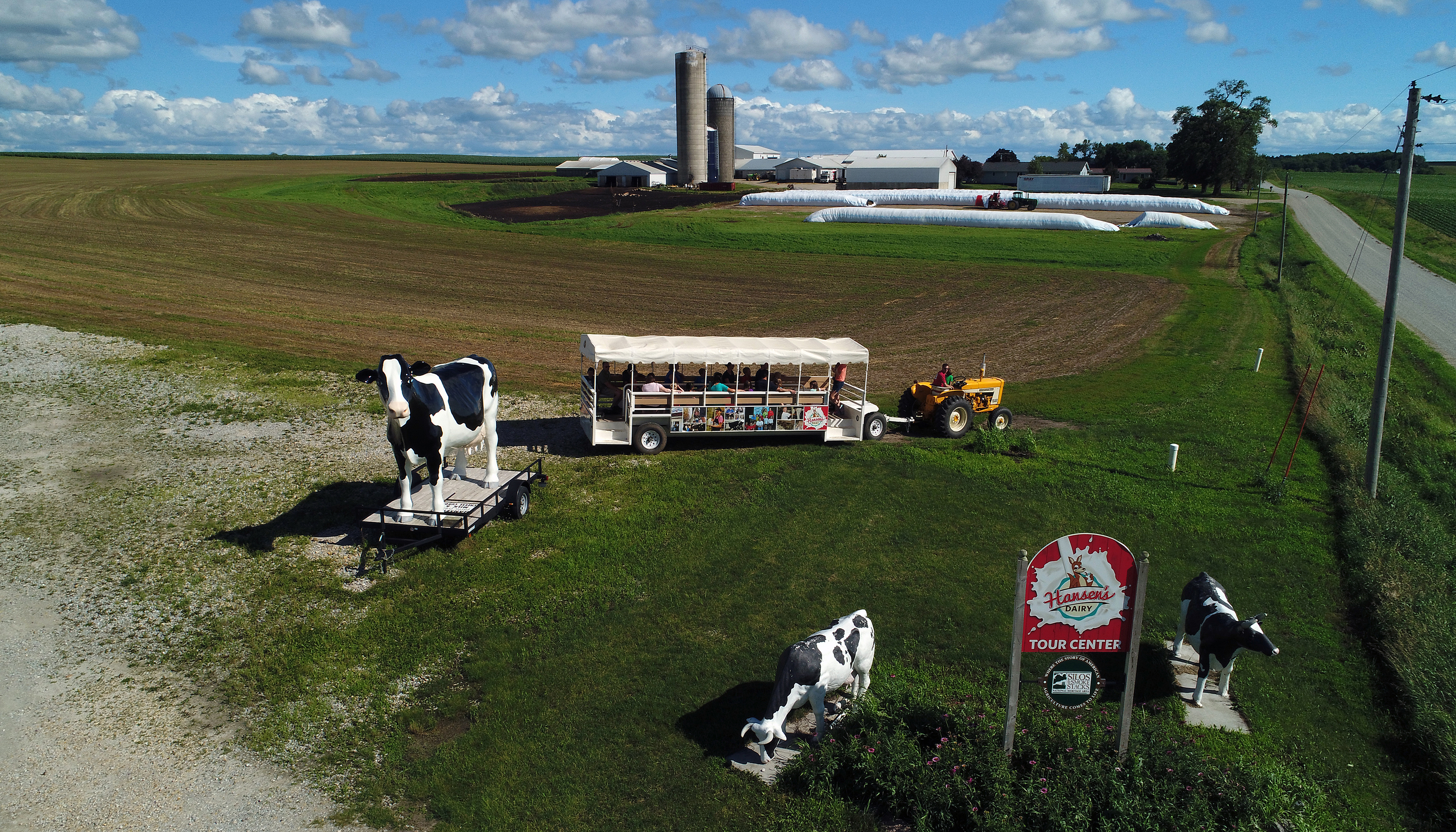
A tour about to get underway at the Hansens’ dairy operation in Hudson, Iowa. The trolley takes visitors around the farm to learn how milk gets from the cow to the table
Rootstalk: You touched on this a bit, but have there been ways you had to adapt or change in this industry?
Hansen: There are three things we highlight that make our milk different from other milks on the shelf. One thing is that we don’t homogenize our milk, which is different from other brands. That means we don’t break down the fat particles in the milk, so the cream rises to the top and you have to shake it before serving. Our milk is also single source. Other processing plants take milk from many different farms and blend it all together. The milk we process is only produced by our closed herd of cows. The third thing is that our milk can get to the retail shelf on the same day it was produced by the cows, so it’s extremely fresh. Those are the three things we do to differentiate ourselves. Yes, we do have our milk in large grocery stores like Hy-Vee and Fareway, but we also have stores of our own, where we sell not only our goods but also other local goods, like meats, eggs and bread. We are often a stop along the way for people grocery shopping, and it is important to remind people to support local businesses along with the other places they are shopping at.
Rootstalk: Are there other differences between your farm and a huge corporate farm? What disadvantages and advantages do you think you have?
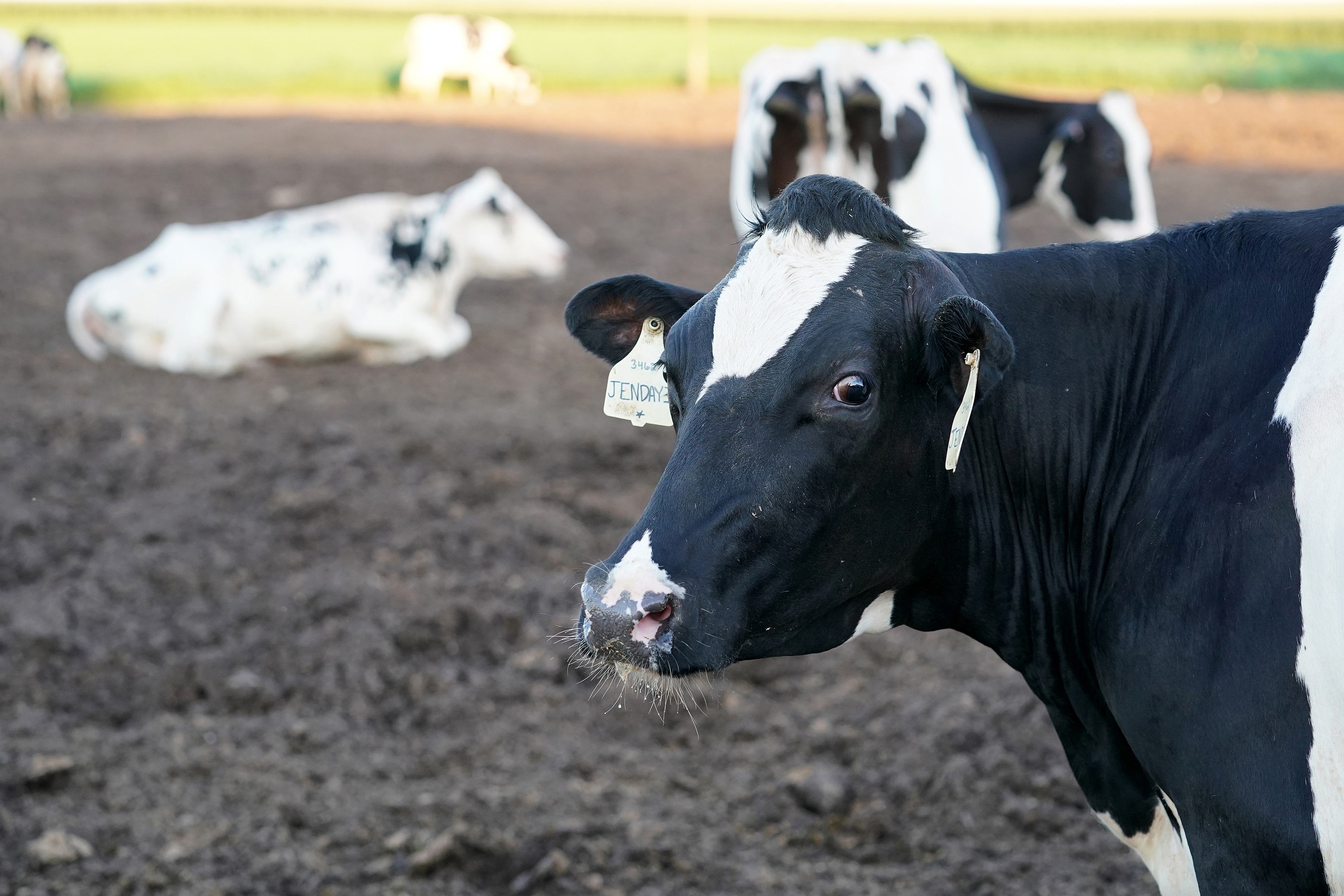
The Hansense milk about 120 cows out of a herd of 300 on their farm
Hansen: I actually don’t like the term “corporate farm.” I know what you’re getting at, and I’m not blaming you. I think the American public definitely has a particular view of a big corporate farm versus a place like [ours]. I am even surprised when I am giving tours and people will make a comment about our farm, like “My dad used to milk cows on his farm, but it is not nearly as big as yours.” And to me we are really not that big. For having 120 milking cows and being able to support the five owner- families, and 30 extra non-family employees, we are not that big. Like I said before, we feel blessed that we have been able to make this our livelihood. We would never be able to do that without processing it ourselves. One thing that I’ve found while giving agricultural tours is that I never want to speak poorly about any agricultural business, because we are all in this together. If people found that they can make money milking more cows and they have to get bigger to do that, then that is okay. Statistics show that 98% of farms are still family owned. We have corporations on our farm too, for liability purposes and because it is a business. I understand that there is a difference between us and a farm in California with ten or twenty thousand cows, but again, in this day and age you really have to make financial decisions to be able to support your family, and if that is on a large-scale farm, then that is what you do.
We do have some advantages because we are a small farm. We feel that we have greater control over our employees. If you have thirty or forty thousand cows you must hire a large number of employees, making it harder to keep an eye on everything that is going on. Again, I am not speaking poorly about them, we just maybe have more of a hometown feeling and family atmosphere and stuff like that. And then I just think, with us, we still invite people out to visit our farm to see how we do dairy farming, and I think that is a big advantage to gaining the trust of people. There are farms out there that would definitely not let anybody onto their farms, and they may have valid fears about activists and such. We have been pretty lucky as far as that goes because we are located in Iowa, which is still mostly rural, and has an economy that depends on agriculture. We are geographically in a place where people know agriculture is good and provides a living for people. When people come from far away to tour our farm, I don’t like to brag about our milk specifically, I just want to encourage them to drink whatever milk is closest to them. I want to speak well about the dairy industry in general.
Rootstalk: It is very interesting that becoming a “bigger” farm might come out of necessity. Has there been any legislation that has hurt or helped the dairy industry in Iowa?
Hansen: I am not that well-versed in [that subject]. The only bill I can think of is the raw milk bill. It proposes to legalize selling raw milk, which I am not in favor of. In the dairy industry, with the way the prices are set, they are very fragile. I think if there is some sort of outbreak that is traced back to raw milk, it will not be good for the dairy industry. When there is a very reliable method of making sure that your milk is safe to drink for a long time with pasteurization, I think it should be taken advantage of. I do not think the benefits of raw milk outweigh the risks. People talk about killing the good bacteria when you pasteurize milk, but you have to be smart about it. Even on our own farm, yes, we drink raw milk, but there are risks in it, like you don’t want to keep it in your refrigerator for too long, and people might not always realize that.
One thing I am very much in favor of is keeping the definition of milk as a product of lactating animals—to reserve it for animal milk as opposed to plant beverages like soy or coconut drinks. But otherwise with regulations, I am not well versed to talk about those. Personally, on our farm, I haven’t seen much effect of high-level regulations.
Rootstalk: What do you see in the future for the dairy industry and for your farm?
Hansen: It’s hard to tell. Again, circling back to the beginning, the fact that people are not drinking as much fluid milk is kind of a game changer. To be blunt about it, fluid milk is where it begins, and any other product is a manufactured product or a byproduct of that milk. For example, one of the things we struggle with is having too much skim milk because we have a larger demand for higher fat dairy products nowadays, especially during the summertime, when we are making ice cream and butter and heavy cream. And then it extends into the holiday season because people want to do a lot of baking. So sometimes we run out of butter or are short on ice cream, but we will have all of the skim milk left over. I just don’t want it to get to the point where milk is almost the byproduct.
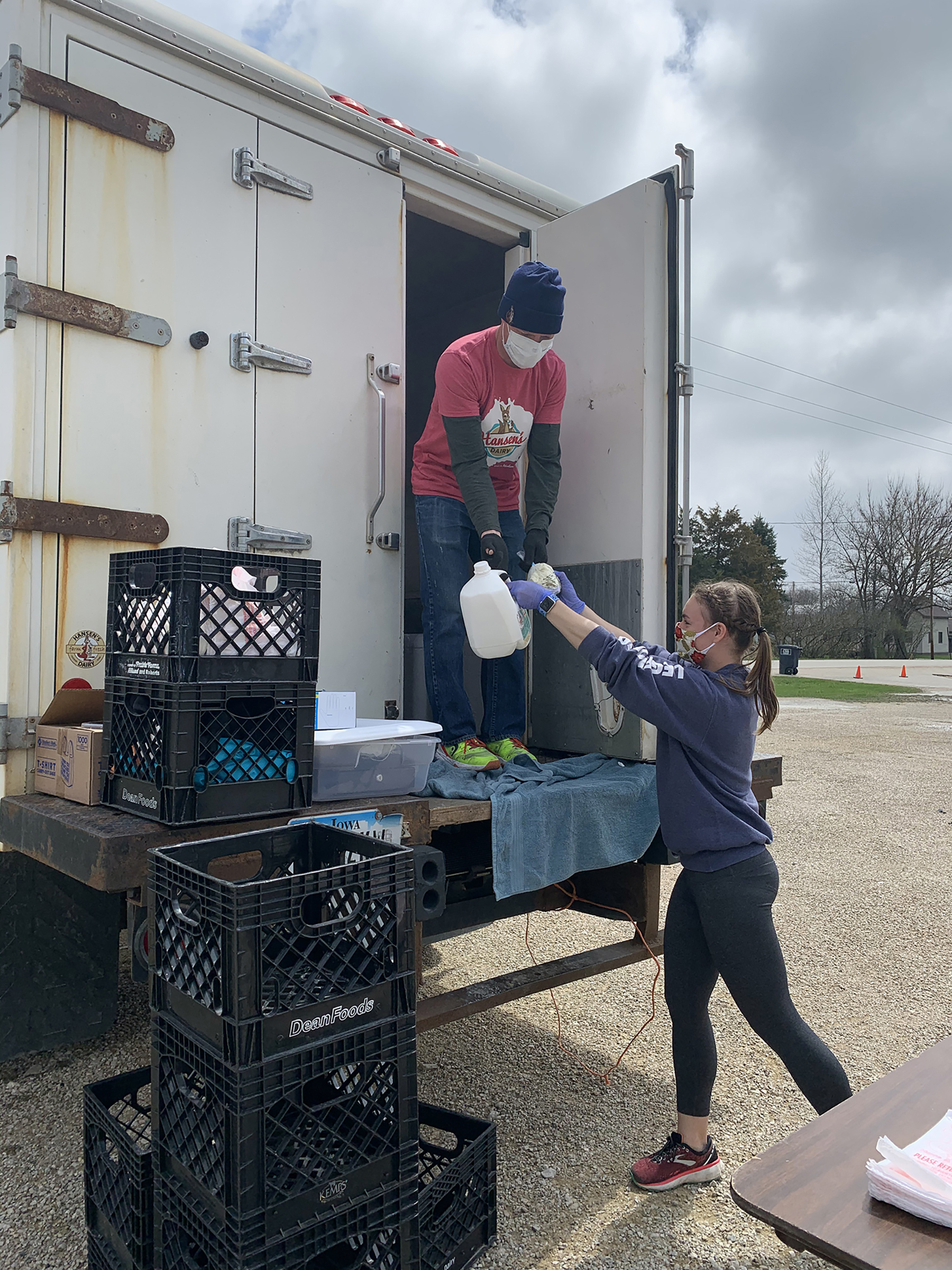
During the pandemic, Hansen’s Dairy has been visiting small town in the area to sell products directly off the truck
We’ve had to make tough decisions. If we have a tank of milk and we process it, we may not have the customers to buy all the fluid milk, but we can certainly use the cream that is in it to make ice cream, and that is a product that has a much longer shelf life and you can build a supply of it. Sometimes that skim milk will go down the drain because cream products are a much higher margin. If we have a surplus we do sell our raw milk once in a while to the co-op. In the past few years, it has become more of a problem because of the fact that Americans are switching to higher fat products. In a good way, there have been studies that say that higher fat dairy products are not responsible for cardiovascular disease and heart problems. The consequence of that is now you are left with all this skim milk. It’s still the most popular product of anything we make but there is an abundance of it. We do send a lot of it to our local food bank, which is very much appreciated, so people who need it are getting highly nutritious, fresh milk from us. Instead of it sitting on the shelves for two weeks and then donating, now it’s going straight from the creamery to the food bank. So that is one way we have been able to mitigate the skim milk problem, but it always remains a challenge. We wish that cows would produce instead of three-and-a-half or four percent milkfat, they would produce 10 percent. That would be great.
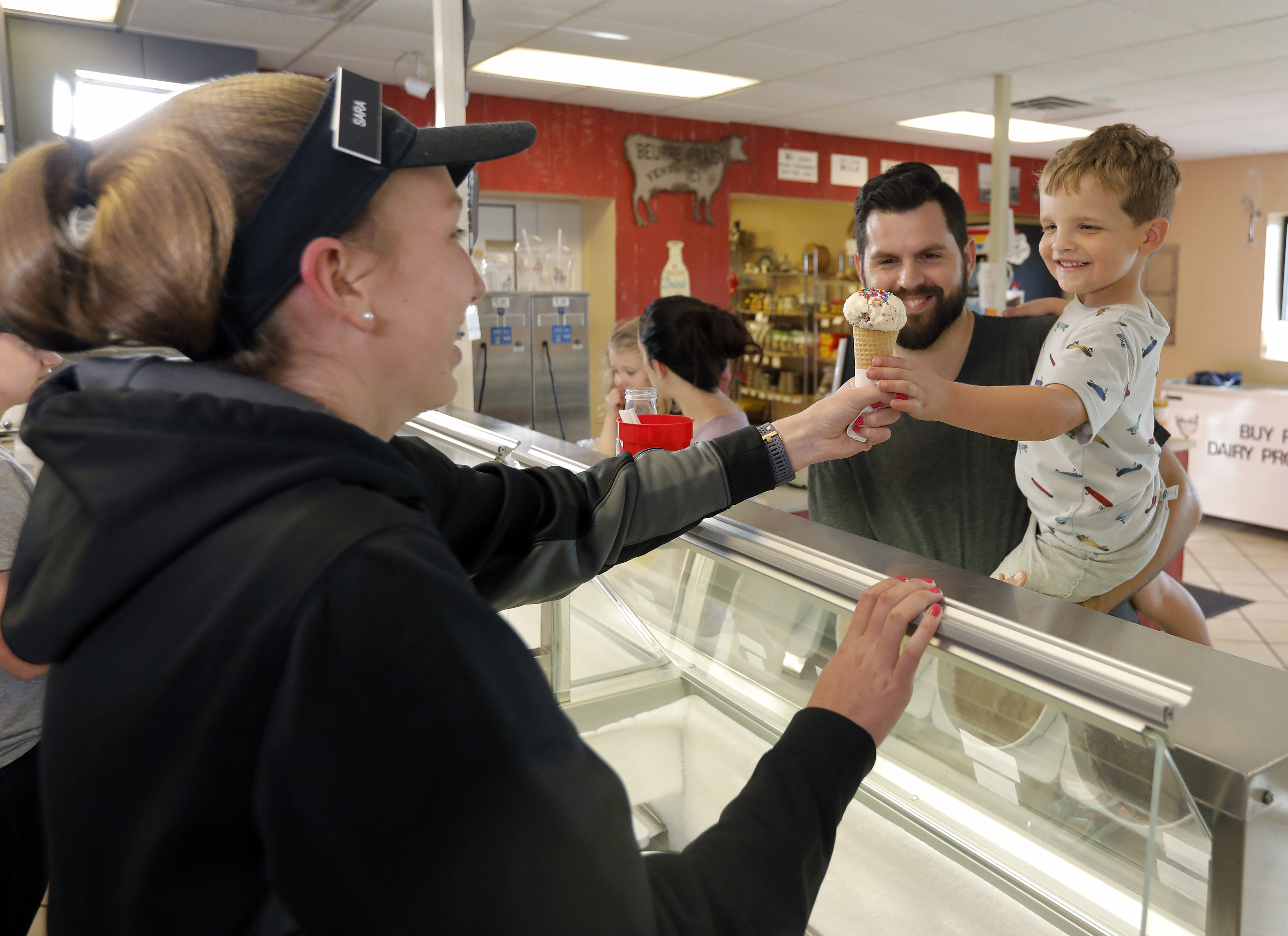
Introducing the next generation of Hansen’s customers to the product in the dairy’s Waterloo store. Locations like these are one way the Hansens have diversified to stay profitable
Rootstalk: Is there anything else you would want people to know about your farm, your family, or the dairy industry in general?
Hansen: I like to remind people that there are a lot of choices out there for beverages, but milk is such a powerhouse of nutrients and it’s a smart choice for people’s families. I feel strongly that kids and adults who drink only water with their meals miss out on adding more of those nutrients to their diets. I don’t know why American perspectives have changed on that. I think it is because there is so much other information out there. However, I still maintain that milk is nature’s most nearly perfect food, and I just hope people think about that when making choices about what their family will drink.
